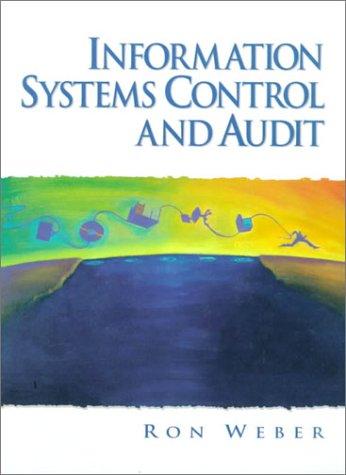Question
The current risk-free rate is 2 percent and the market risk premium is 4 percent. You are trying to value ABC company and it has
The current risk-free rate is 2 percent and the market risk premium is 4 percent. You are trying to value ABC company and it has an equity beta of 0.9. The company earned $3.00 per share in the year that just ended. You expect the company's earnings to grow 5 percent per year. The company has an ROE of 10 percent.
What is the value of the stock? Do not round intermediate calculations. Round your answer to the nearest cent. $
What is the present value of the growth opportunity? Do not round intermediate calculations. Round your answer to the nearest cent. $
Back to Assignment
Attempts Attempt 1 score is6Attempt 2 score is20
Average 13 out of 4013 / 40
6. Problem 11-09
eBook Problem 11-09 Each month for the past several years, you have collected the monthly returns to an index of large-cap value stocks and an index of large-cap growth stocks. For the last two years, for both of the indexes you have converted these monthly returns into a series of rolling average annualized returns by taking an average of the previous 12 monthly returns and multiplying that average by 12. These rolling average annualized returns are shown below for each index over the past 24 months.
MonthValue Index Annualized Return (%)Growth Index Annualized Return (%)19.44%9.75%216.6217.95327.8529.22418.1613.78517.5614.99617.9515.29719.3612.07817.4510.14918.4510.951021.3813.301127.9223.621222.7717.041326.0320.311422.5117.151521.7019.751625.4825.451726.3627.101827.4028.221916.8620.492024.4926.072122.4821.372216.1418.752315.1119.272423.4625.75
For both the value and growth indexes, calculate the arithmetic mean of the 24 monthly average annualized returns. Which index appears to have outperformed the other over this period? Explain. Do not round intermediate calculations. Round your answers to two decimal places.
The Value Index: % The Growth Index: % The -Select-Growth IndexValue IndexItem 3 appears to have outperformed the -Select-Growth IndexValue IndexItem 4 over the 24-month period by %.
For each month in this sample period, compute the difference in annualized returns between the value index and the growth index (Rvalue - Rgrowth). Calculate the average of this return differential series and compare it to your answers from part (a). Do not round intermediate calculations. Round your answers to two decimal places. Negative values, if any, should be indicated by a minus sign. If your answer is zero, enter 0. MonthRvalue - Rgrowth1 %2 %3 %4 %5 %6 %7 %8 %9 %10 %11 %12 %13 %14 %15 %16 %17 %18 %19 %20 %21 %22 %23 %24 %Average % The average of the return in the differential series is -Select-less thanmore thanthe same asItem 31 the difference in the arithmetic means.
Choose the correct graph of the return differential series. A. B. C. D. The correct graph is -Select-graph Agraph Bgraph Cgraph DItem 32 .
The average return differential from part (b) is one way of calculating the risk premium associated with a value investment factor. Interpret this risk premium statistic and explain how it can be seen as the average annualized return earned by a hedge fund following a strategy to go long in value stocks and short in growth stocks. Do not round intermediate calculations. Round your answers to two decimal places. Negative values, if any, should be indicated by a minus sign. A hedge fund that was following a strategy to go long in value stocks and short in growth stocks would -Select-have beennot have beenItem 33 quite profitable. The hedge fund would have -Select-earnedlostItem 34 the average annualized return in the Value Index of %, thus -Select-earninglosingItem 36 it the additional risk premium of %.
Compute the percentage of the months in the two-year sample period when the rolling average annualized return to the growth index was actually larger than that for the value index. Do not round intermediate calculations. Round your answers to two decimal places. % What, if anything, does this tell you about the reliability of the value risk premium over time? This means that the value risk premium of % was reliable for over % of the time in the period studied.
Grade it Now
Save & Continue
Continue without saving
Step by Step Solution
There are 3 Steps involved in it
Step: 1

Get Instant Access to Expert-Tailored Solutions
See step-by-step solutions with expert insights and AI powered tools for academic success
Step: 2

Step: 3

Ace Your Homework with AI
Get the answers you need in no time with our AI-driven, step-by-step assistance
Get Started


